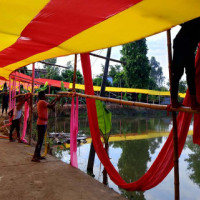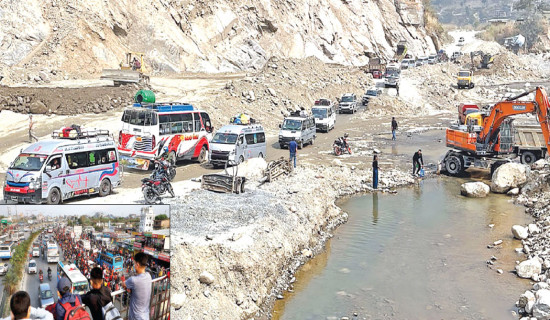- Friday, 24 October 2025
Obesity in Police personnel affects fitness image
Kathmandu, June 19: The general public traditionally envisions a police officer as a figure clad in a crisp blue uniform, marked by sharp discipline and a swift, agile physique -- an embodiment of order and readiness.
Yet, within Nepal’s Police Force, that ideal is quietly being challenged by an escalating issue: obesity among officers, especially at the leadership level and field operation in-charge and at some junior ranks.
Despite the physically demanding nature of police service, the reality of a fit and smart police officer is changing. Senior officers are increasingly observed with visible abdominal obesity, often escorted by junior personnel due to diminished agility -- a stark contrast to the public’s expectations of uniformed fitness.
The Nepal Police Headquarters acknowledges the issue. While routine fitness inspections are conducted, many of the most overweight personnel are ironically located within the very institutions responsible for these checks.
The problem is particularly prevalent among officers of the rank of Senior Superintendent of Police (SSP) to Additional Inspector General (AIG), with obesity most acute in the Kathmandu Valley and provincial command offices. Some junior rank police personnel like constable and followers also have the obesity problem.
During the term of former IGP Basanta Bahadur Kunwar, he had also issued directives to all police units, urging them to ensure regular physical training and maintain fitness among subordinates. However, he still today, conceded there is no concrete legal framework to regulate weight control within the force. That means, the Police Headquarters has not yet implemented Body Mass Index (BMI) calculation system of its own criteria.
Efforts were made to introduce a BMI system -- referred to as the DGIM (Height-to-Weight Index) -- but the initiative faced practical roadblocks. “We encountered implementation challenges,” Kunwar explained, though he personally maintains a strict fitness regimen, running up to 24 kilometers daily.
Officers who are overweight often miss out on coveted international peacekeeping missions and other professional opportunities. Even outside Kathmandu, in district posts, the issue is evident from constable to high-ranking officials. Such officers, reports suggest, are often unable to perform basic physical tasks, with some struggling to even run short distances without gasping for breath.
Former IGP Upendra Kant Aryal once spearheaded a campaign to reduce abdominal obesity in the force, which led to a brief wave of fitness enthusiasm. However, that initiative was informal and lacked sustainable institutional backing.
Former IGP Dhiraj Pratap Singh emphasised the need for systemic reform. "In a military-structured organisation, personnel must be conscious of their physical condition," Singh remarked. He pointed out that officers above the SSP level rarely engage in field duties and often neglect personal exercise, contributing to the trend.
Dietary habits have also contributed to the growing waistlines. Singh recommended codifying age-based fitness and weight standards into police regulations, similar to the Nepali Army. "Without regulatory compulsion, informal directives from one rank to another are unlikely to produce lasting change,” he said, adding that junior personnel are often less responsive to advice when fitness is perceived as a purely personal matter.
Deputy Inspector General and Spokesperson for the Police Headquarters, Binod Ghimire, also conceded that the HQ has not implemented and introduced a particular BMI procedure because of various technical difficulties and implementation part inside the force.
As we are not like a complete military or semi-military force like that of Nepali Army and Armed Police Force Nepal, we have not implemented BMI in the force but have mechanism to monitor such fat-belly officers and junior officers, said DIG Ghimire.
Those officers and personnel having obesity are observed and put into notice during their personal evaluation, self-appraisal form fill-up and promotion, claimed Ghimire.
Meanwhile, in the Armed Police Force Nepal (APF), a procedure related to health classification based on Body Mass Index (BMI) has been in effect since 2022. According to the APF’s Spokesperson and DIG, Kalidas Dhaubaji, as per the procedure, officers who are classified as extremely underweight or overweight will be deprived of important benefits and opportunities.
He said, “Medical boards are being formed at the central and battalion levels to conduct BMI tests and classifications, and preparations for examinations are underway.” A medical board has been formed at the central level under the leadership of the DIG of the Administration Directorate, and at the battalion level under the leadership of the Deputy Battalion Head. According to the procedure, BMI certification must be carried out by the designated medical officer by the 15th of Mangsir (late November/early December) each year. However, exceptions to the BMI health classification will apply to pregnant women, personnel undergoing medical treatment, and athletes representing in weight-based sports, with specific timelines and conditions considered.















